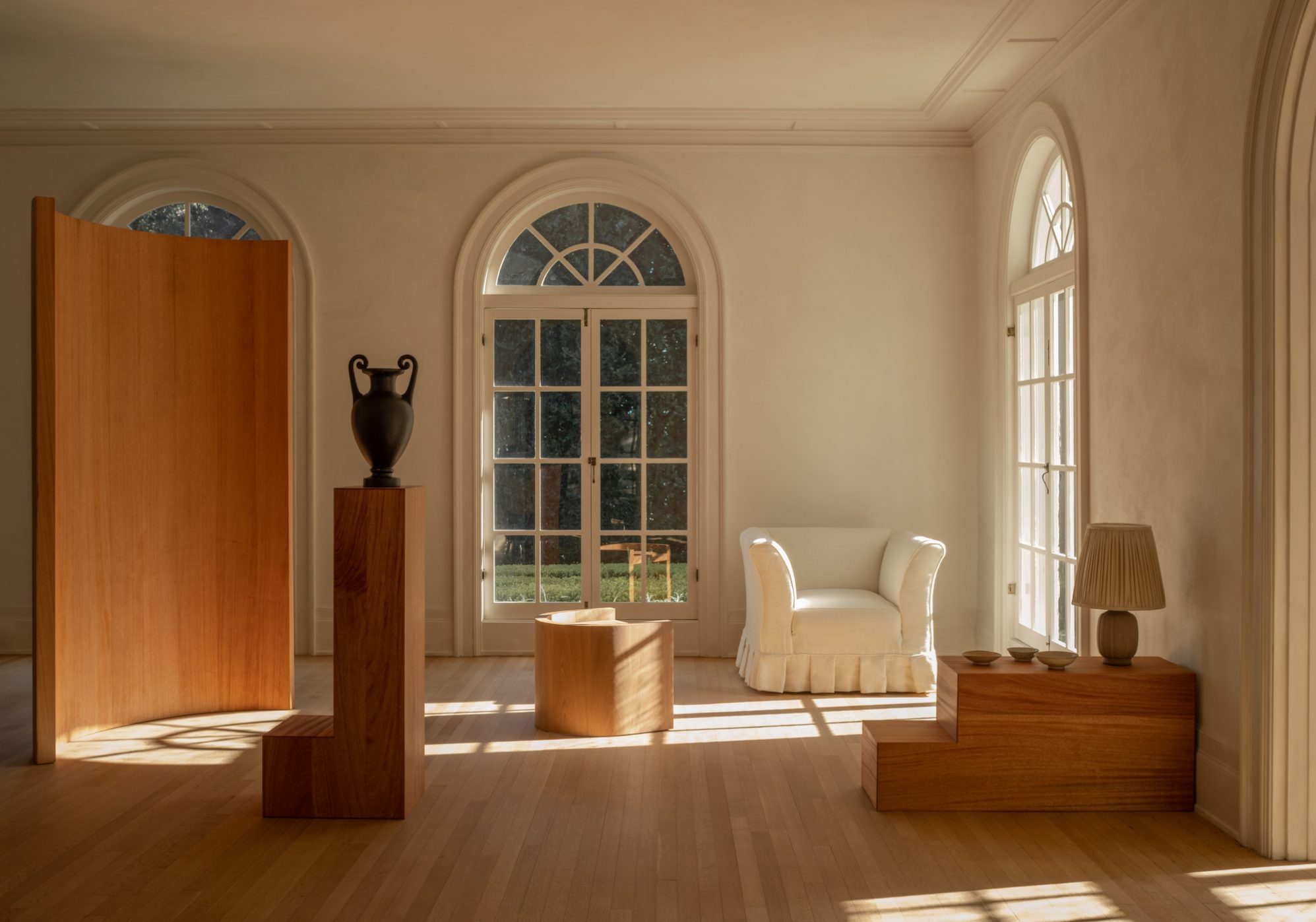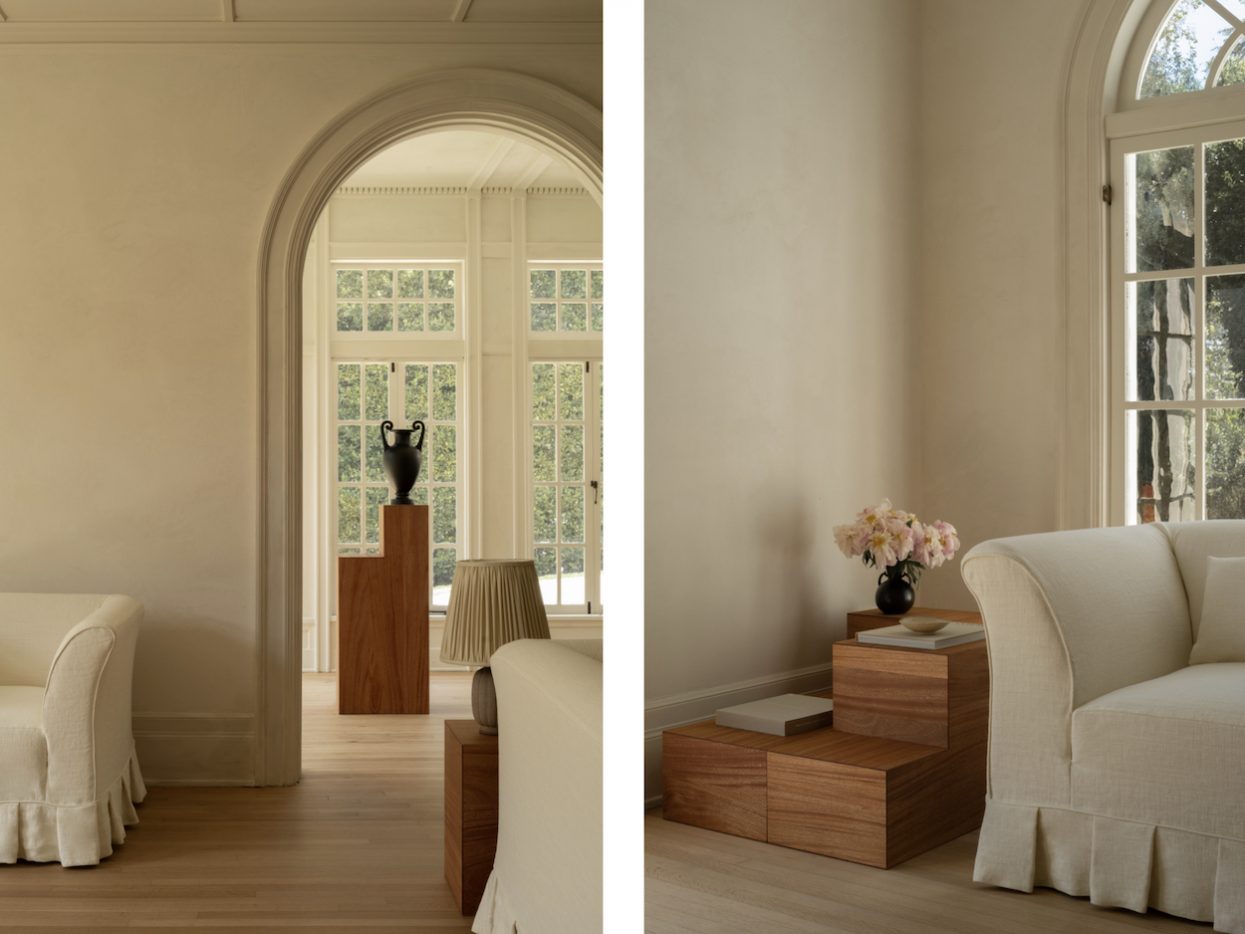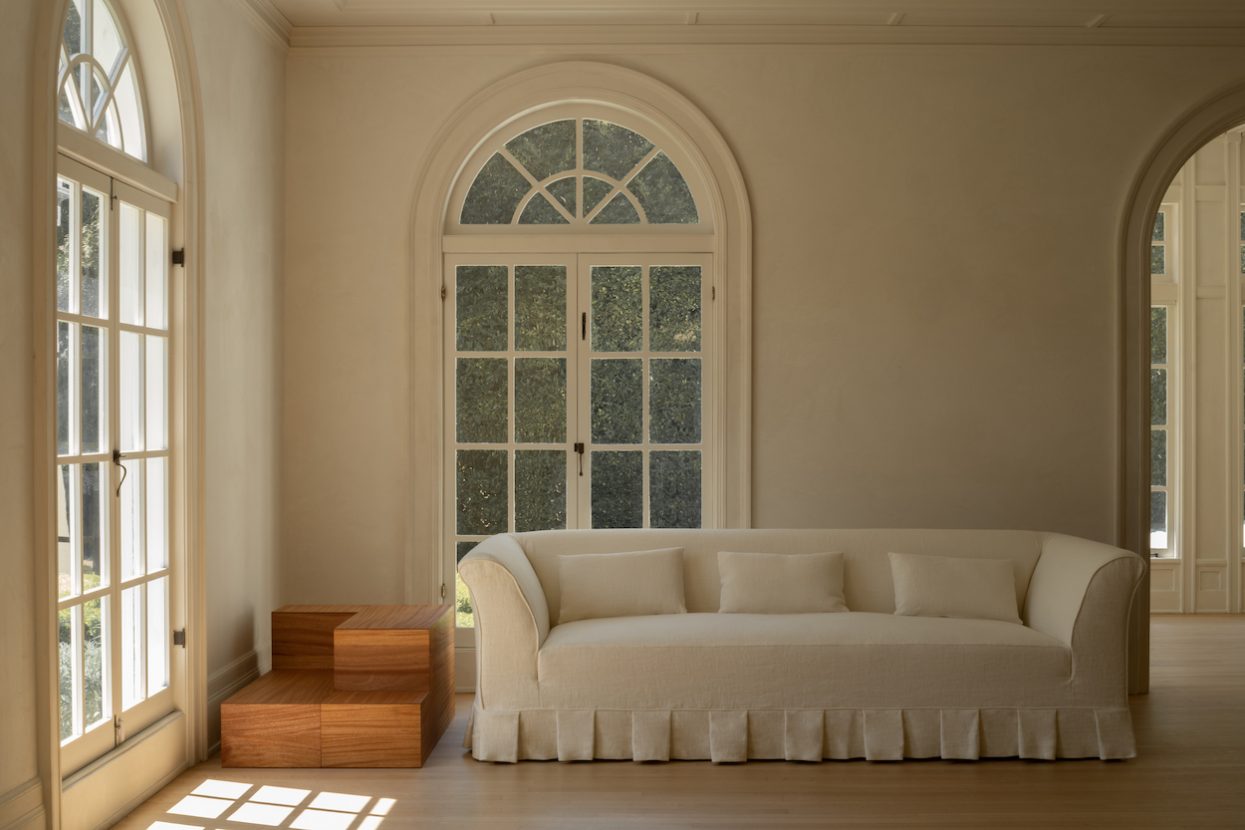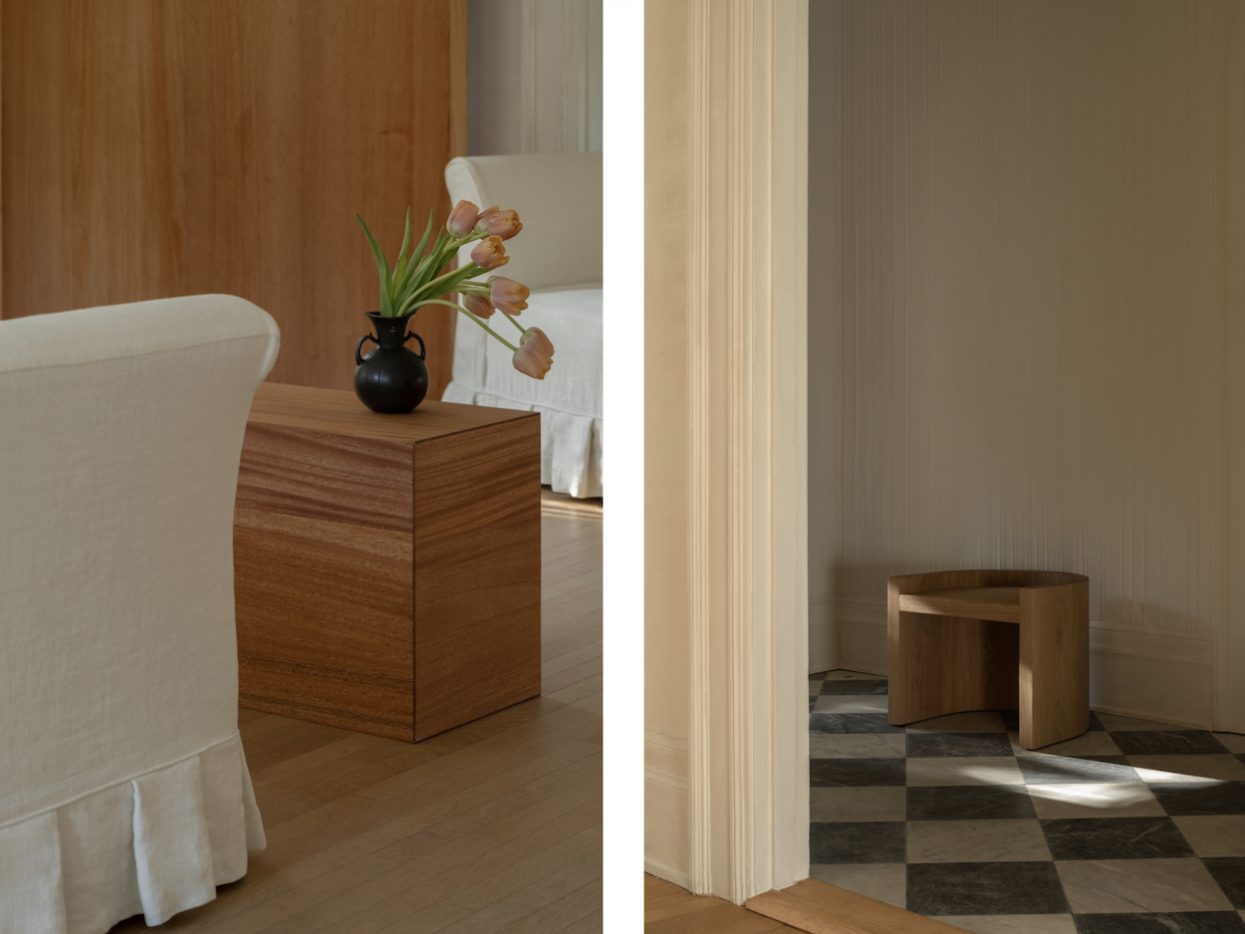Before Colin King emerged as one of the interior design industry’s most sought-after stylists, the New Yorker was pursuing a lifelong interest in dance. That revelation might not surprise those familiar with his prolific talent for arraying quotidian objects and furniture in exquisite tableaux, which he imbues with a dancer’s understanding of empty space and stillness. Those elements coalesce in his latest collection, a series of furniture designed with The Future Perfect founder David Alhadeff to celebrate the collectible design gallery’s 20th anniversary.
Named “Variations” after a series of performances by dancer and choreographer Merce Cunningham, the collection aims to spark a spontaneous choreography with its surroundings. The Enveloppé Sofa and Chair gently riff on the traditional shelter-arm sofa, with subtle curves and outward-reaching arms that seem to pull the sitter in for a soft embrace. The curvilinear Développé Screen echoes that graceful rhythm, its mahogany build adding further dashes of warmth. They contrast the Position Plinths—a quartet of wooden plinths named after foot positions in ballet. “I’m a visual storyteller by nature,” King says, “and through this collection we’ve created simple, elegant, and functional pieces that invite interaction.”
The seamless fusion of Art Deco, Neoclassicism, and Judd-inspired formalism—good balance is crucial in dance, remember—perhaps nods to a deeper story about American design finding its foothold. To that end, King finds an ideal collaborator in The Future Perfect, which, under Alhadeff’s hand, has helped hoist megawatt talents like Bec Brittain, John Hogan, and Ian Collings to even greater heights thanks to staging high-concept exhibitions in dynamic, lived in environments that transcend the white cube. “We’ve found kinship in our shared love for eclecticism and the history of 20th-century design,” Alhadeff says. “Variations is the result of lovingly melded sensibilities—Colin’s virtuosic instinct for spontaneous opulence combined with the Future Perfect’s grand sense of scale.”




